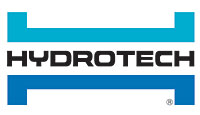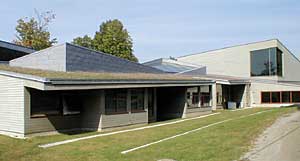Designing with Green Roofs: Maximizing Sustainability and Stormwater Management
Roots are Contained by Barriers
Whether planting smaller grasses or larger shrubs, all plants have roots. The balance between protecting the membrane from damage and promoting healthy root growth and spread (not confining or killing roots) is the primary goal of a root barrier. Root barriers can vary depending on the type of plants. For species with aggressive root systems, contractors can lay asphaltic sheets with an embedded repelling agent or heavy duty plastic sheets with taped or overlapping seams to prevent root penetrations. For smaller plants with less aggressive root systems, thin polyethylene sheets are installed, again overlapped with seams.
|
|
Watering the Plant and Aerating the Soil is Part of the System
The delicate equilibrium between over-watering and not providing enough water can be challenging enough with common houseplants. The scale is greater on a roof top, but the issue is the same. Moisture retention and drainage panels that incorporate both a reservoir system and drainage channels are located beneath the soil, under a filter fabric, in a well-designed green roof. The drainage assembly and retention layer plays an essential part in storing rainwater that filters through the growing media. A system which looks like an egg crate works as follows: Drainage channels above and below ensures that excess water is free to drain out of the system. The profile of the components also provides water storage troughs, that retain additional water for use by the vegetation. Diffusion holes through the panels allow air circulation and water vapor to move up into the root zone. In an extensive roof where little or no additional irrigation to be provided, a moisture mat can be added to the system assembly to absorb and store additional usable water.
|
Dirt
Dirt is a common material, but soil is generally engineered as a growing medium for green roofs. As most gardeners will testify, dirt is heavy and often contains clay that does not allow water penetration. Soil prepared for green roofs is 30 percent lighter than ordinary soil and retains moisture, contains nutrients, and provides good drainage. These soils are blended mixes of sand and organic matter, along with lightweight aggregates such as expanded shale, slate, clay or pumice or scoria (which is the refuse from melting of metals).
Too much acidity in the soil prevents plant growth. On roofs, rain and the pollution carried by rain, will be too acidic and not have the proper pH balance for growth. The pH scale ranges from 0 (too acidic) to 14 (too alkaline), and good soil needs a pH level of about 6.5. The microclimate of the site and surrounding soils may need to be tested in order to provide the appropriate green roof soil nutrient mixes.
|
Plant Selection Criteria
The Loyola University roof garden is an extensive garden planted with native prairie plants and sedums. Succulent plants, sedums require little soil, can withstand long periods without water, and thrive in difficult climates. They are less than one foot tall and come in a variety of attractive colors and shapes. For these reasons, sedums are considered the perfect plant for an extensive garden roof.
Gardeners select plants based on climate conditions. Roof gardeners must understand rooftop ecology and choose plants appropriate to the level of care provided in the roof system. Since roof landscapes mimic nature, plants should be sustainable. Plants should be selected based on their size, tolerance to drought, and maintenance requirements, and by combining annuals and perennials, cool and warm season plants, and shallow-rooted wildflowers with fibrous grasses provides variety.
Intensive roofs, such as the Schwab Hospital roof, are landscaped for diversity. Plants were selected to frame the seasons, and care was taken to create a Midwest garden of native plants. Qualified landscape architects should be selected to prepare a plant list for the green roof. Plants provided for a green roof should have a tolerance for drought, have non-invasive, fibrous roots, and grow fast. The garden should be planted so it can grow for a season before winter dormancy in Northern climates.












